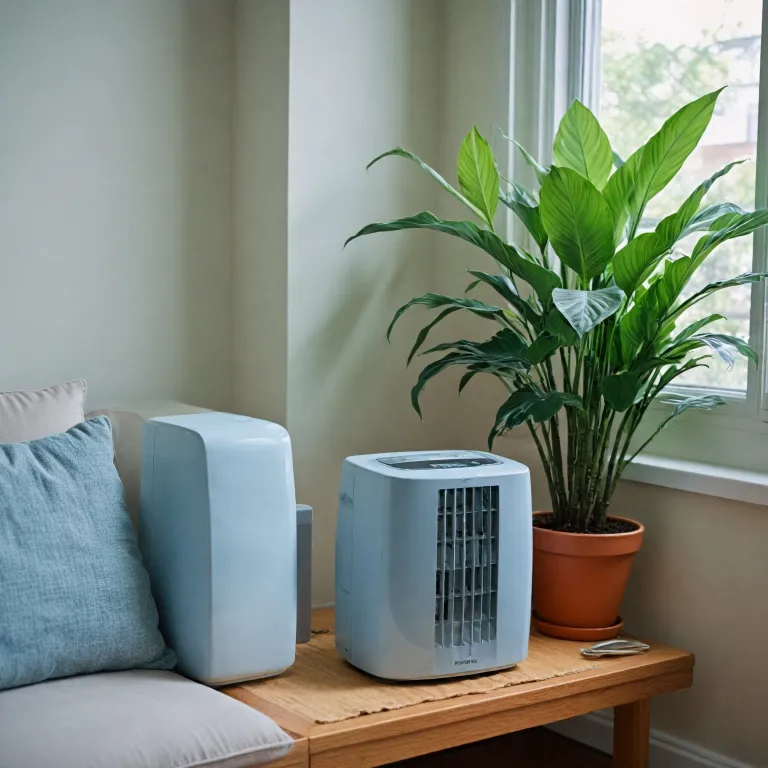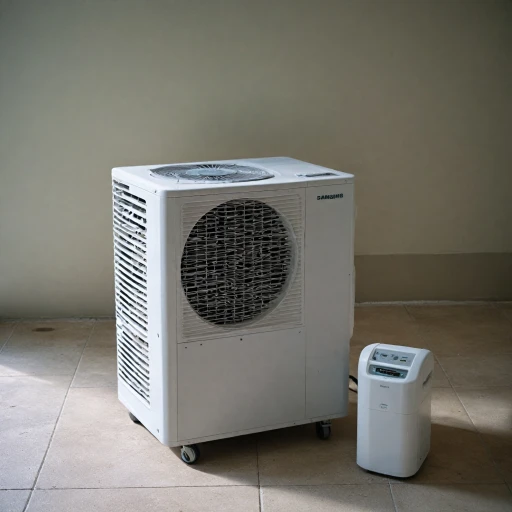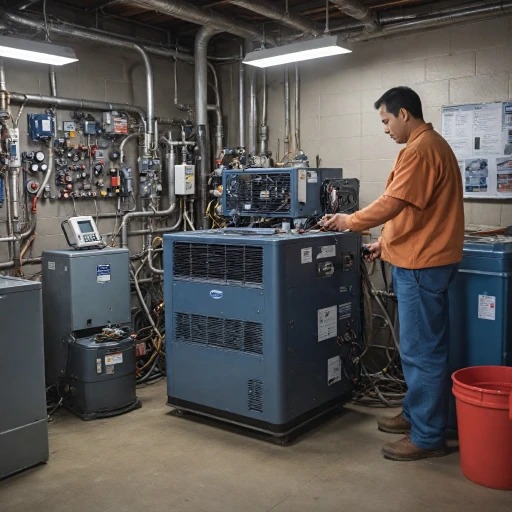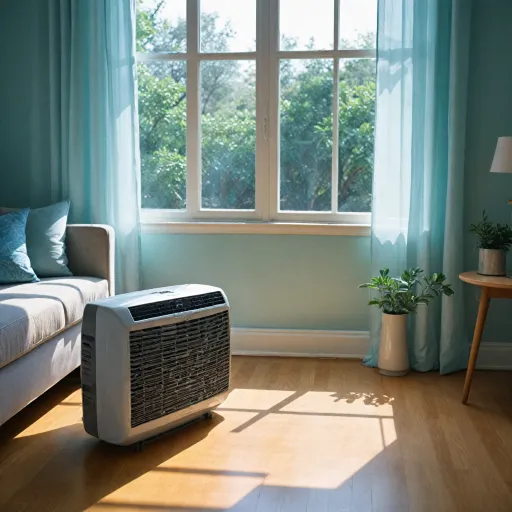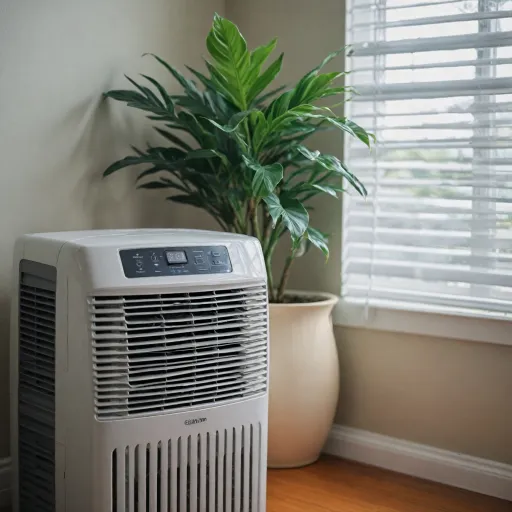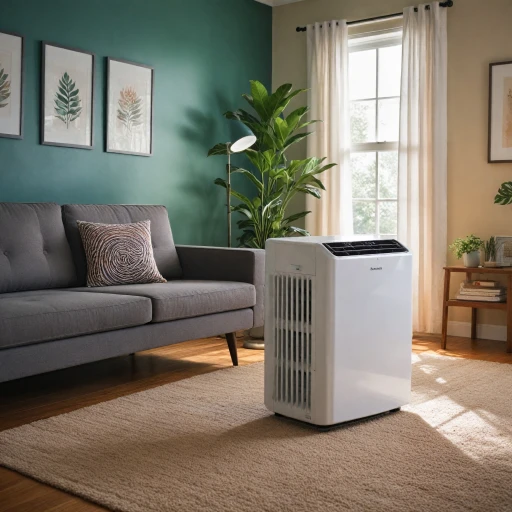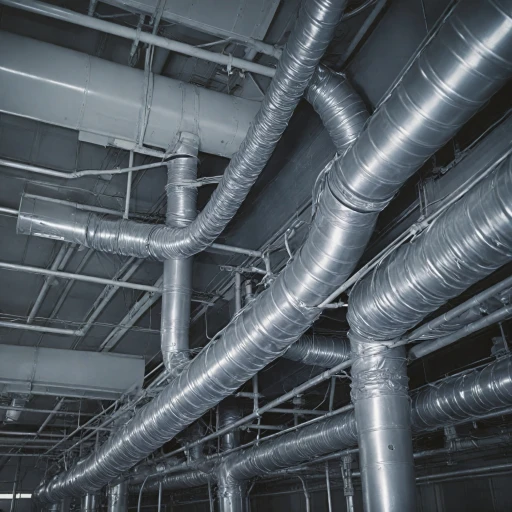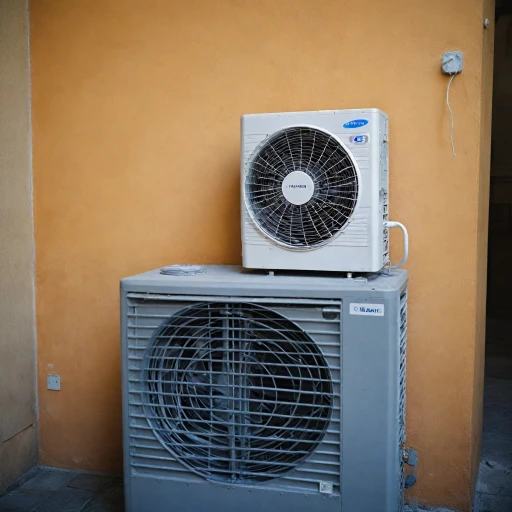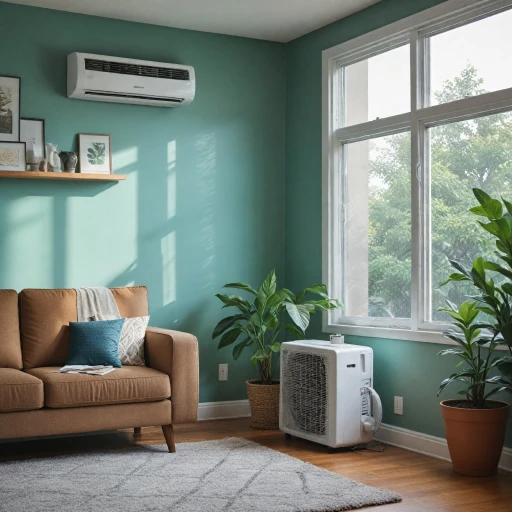
Understanding Common Portable AC Problems
Identifying Common Problems in Portable ACs
Portable air conditioners, like any other cooling systems, are not without their challenges. The first step in tackling these issues is identifying the most common problems encountered by users. Understanding these can help you undertake efficient fixes and ensure the optimal performance of your portable unit.
- Cooling Performance Issues: Your portable air conditioner may not be blowing cold air as expected. This could result from an underlying refrigerant leak or simply due to blocked filters. Regular maintenance of your unit and ensuring proper refrigerant levels are key to resolving such problems.
- Power and Electrical Concerns: Sometimes, the unit might not turn on at all. This could be linked to the power cord or power supply issues, potentially needing a reset. In such cases, it's advisable to perform a thorough check of the power connections and the power outlet to eliminate any disruptions in power flow.
- Improper Ventilation: Ensuring that the exhaust hose is properly connected is vital. Failure to do so can lead to hot air being recirculated back into the room instead of being vented out, diminishing the cooling effect.
- Water Leakage and Drainage Problems: Accumulated water condensation can lead to leaks if not handled correctly. Regularly empty the water reservoir and check for any cracks or blockages in the drainage system to maintain the proper operation of your air conditioner.
- Clogged Filters and Coils: Dust and debris can accumulate in the air filters and on the condenser coils, which hinders airflow and cooling capabilities. Cleaning or replacing filters and ensuring the coils are dirt-free can greatly improve the unit's cooling capacity.
Addressing these issues promptly will help in maintaining the overall efficiency and longevity of your portable AC unit. This paves the way for effective maintenance practices that we'll explore further, including recognizing when it's time to seek expert help.
Troubleshooting Tips for Portable ACs
Diagnostic Steps for Common Cooling Issues
When faced with a portable air conditioner that isn’t cooling effectively, it’s crucial to run through several diagnostic steps to ensure optimal cooling performance. If your portable unit isn’t blowing cold air, checking the power supply is a straightforward initial step. Verify that the power cord is securely plugged in and that the outlet is functioning by testing another device. If the outlet is faulty, engage a certified electrician.
Ensuring Proper Airflow
Proper airflow is critical for a portable air conditioner's optimal functioning. Make sure the exhaust hose is correctly installed. A clogged exhaust hose can restrict hot air from escaping, causing the unit to underperform. If hot air can't efficiently exit, the portable unit can't effectively circulate cold air throughout the room. Ensure that nothing is blocking the exhaust hose.
Investigating Refrigerant Issues
If your portable air conditioner continues to struggle, a refrigerant leak may be the culprit. The refrigerant is essential for absorbing heat, and a leak can disrupt the entire cooling system. If you suspect a refrigerant leak, it's advisable to consult a professional technician for a full assessment and repair. For more information on handling a leaking portable air conditioner, visit our guide on water leakage in portable air conditioners.
Checking Filters and Coils
Regular maintenance, such as cleaning the air filters and ensuring the condenser coils are free from dust, is vital. Dirty filters can severely limit the unit’s ability to draw in air, thereby hindering cooling. Additionally, inspect the condenser coils for any buildup that might impair the unit's efficacy. Regular upkeep can improve your air conditioner's effectiveness and extend its lifespan.
Resetting the Thermostat
Sometimes, a simple reset can resolve persistent issues. If your portable air isn’t responding correctly to the thermostat settings, try turning the unit off and on. Check the manual for specific instructions related to your model. For electronic models, calibrate the thermostat to ensure it communicates accurately with your cooling system to achieve desired temperatures.
Maintenance Practices for Longevity
Ensuring Efficient Operation and Longevity
For anyone relying on a portable air conditioner to beat the heat, regular maintenance is essential to keep the unit cool and efficient. By implementing some simple practices, you can significantly enhance the overall cooling performance and extend the lifespan of your portable unit.
- Regularly Clean or Replace Filters: Dirty filters can restrict airflow, decreasing efficiency and causing the unit to work harder than necessary. Ensure you clean or replace them as recommended by the manufacturer to maintain optimal air conditioning.
- Inspect the Exhaust Hose: The exhaust hose is vital for venting the hot air out. Make sure it's properly connected and free of kinks or obstructions that could hinder performance.
- Maintain the Condenser Coils: Condenser coils should be kept clean to ensure they are not impeded by dirt or dust. Dirty coils can cause the unit to overheat and reduce its cooling capacity.
- Check for Refrigerant Leaks: If the unit isn't cooling as expected, a refrigerant leak might be the cause. A drop in refrigerant levels can compromise cooling systems, leading to inefficiency. It's advisable to contact a professional if you suspect a refrigerant leak.
- Monitor Water Levels and Drainage: Portable air conditioners often collect water from the air as part of the cooling process. Regularly empty the water tank or check for proper drainage to prevent leaks and ensure the unit functions correctly.
- Verify Power Supplies: Always ensure that your power cord and power supply are intact and suitable for the unit's requirements. A stable power supply helps in maintaining consistent air conditioner performance.
- Manage the Thermostat Settings: Correct thermostat settings can affect cooling efficiency. Adjust the thermostat to a reasonable temperature to balance performance with energy consumption.
Implementing these steps can lead to improved performance and a longer lifespan for your portable air conditioning unit. For instance, understanding how unpleasant odors arise can prevent unwanted surprises and enhance your overall cooling experience.
When to Seek Professional Help
Recognizing When Professional Assistance is Necessary
While many portable air conditioner issues can be resolved with basic troubleshooting and regular maintenance, there are times when professional help is essential. Understanding when to call in an expert can save you time and prevent further damage to your unit.
Persistent Cooling Problems
If your portable air conditioner isn’t cooling effectively despite ensuring proper settings and troubleshooting common issues, it might be time to consult a professional. Persistent problems with blowing cold air could indicate deeper issues like refrigerant leaks or malfunctioning condenser coils that require specialized tools and expertise to fix.
Unusual Noises or Smells
Strange noises or odors coming from your portable unit can be a sign of internal damage or electrical issues. If you notice grinding, rattling, or a burning smell, turn off the power supply immediately and seek professional help. These symptoms could indicate problems with the fan, motor, or even the power cord.
Water Leaks and Excessive Moisture
While some water accumulation is normal, especially in humid conditions, excessive leaks or moisture could point to a malfunctioning drain system or clogged filters. If basic fixes don’t resolve the issue, a technician can inspect the unit for potential blockages or damage in the cooling systems.
Frequent Power Issues
If your air conditioner frequently turns off or fails to start, it might be due to electrical issues or a faulty thermostat. A professional can assess the power supply and ensure that the unit is receiving the correct voltage. They can also check for any issues with the power cord or internal wiring.
Regular Maintenance and Inspections
To prevent these issues, regular maintenance is key. However, if you’re unsure about performing these tasks yourself, hiring a professional for routine inspections can help maintain your unit’s performance and longevity. They can clean the filters, check the exhaust hose, and ensure the refrigerant levels are adequate.
Choosing the Right Portable AC for Your Needs
Selecting an Optimal Portable Air Conditioning Unit
Choosing the right portable air conditioning unit is crucial to ensure effective cooling performance, especially during warm seasons. Portable air conditioners vary in size, power, and features, so it's important to assess your specific needs and constraints before making a purchase.- Room Size: Measure the space you intend to cool. Portable air conditioners are rated by the British Thermal Units (BTU) per hour. A higher BTU rating results in better cooling of larger areas. For example, a unit rated for 8,000 BTU can effectively cool a room up to 200 square feet.
- Cooling Performance: To ensure your unit efficiently blows cold air, check the cooling systems, including the thermostat settings and refrigerant levels. Regular maintenance of air filters and condenser coils is also essential to maintain airflow and performance.
- Exhaust Hose and Ventilation: Proper installation involves positioning the exhaust hose and ventilation system to remove hot air efficiently. Ensuring a secure fit can prevent potential inefficiencies in cooling and potential backflow of heat.
- Power Supply: Verify compatibility with your power supply. Check the power cord for any damages and ensure the plug fits securely into an outlet. This can prevent issues related to power interruptions or unit isn cooling effectively.
- Additional Features: Modern units include innovative features such as programmable thermostats, remote controls, and energy-saving modes. These elements can enhance your comfort and ease of use.
- Portable Unit Placement: To optimize the performance, place the portable unit in an area free from obstructions. Avoid direct sunlight exposure or blockage by furniture, which can affect the air conditioner's ability to cool the environment effectively.
Innovative Features in Modern Portable ACs
Modern Advancements and Features
Portable air conditioners have come a long way with innovative features designed to enhance their cooling performance and user convenience. When selecting a portable unit, it's essential to be aware of these advancements to ensure you get the most efficient air conditioning for your needs.- Smart Thermostat Integration: Many new models come equipped with smart thermostats, allowing users to control the cooling systems remotely via smartphone apps. This not only offers convenience but also helps optimize the unit’s energy efficiency by maintaining the proper temperature settings when you're away.
- Improved Exhaust Hose Systems: Innovations in exhaust hose design have improved the way these portable units manage hot air. Enhanced hose systems can ensure more effective ventilation, thereby preventing issues like heat buildup in the room.
- Energy Efficiency Upgrades: Portable air conditioners now often feature eco-friendly refrigerants and energy-saving modes. These advancements contribute to reduced energy consumption while keeping the unit cool effectively, especially during prolonged use.
- Water Drainage Solutions: Newer models address common concerns related to water drainage more efficiently. Some innovations include self-evaporative systems that minimize the frequency of water reservoir draining, reducing maintenance needs.
- Enhanced Filters and Coils: Regular maintenance is crucial for any air conditioner, but the latest units incorporate improved filters and coils for better air quality and cooling effectiveness. These features can help prevent clogging and increase the unit's lifespan, ensuring a consistent flow of cold air without frequent issues.
